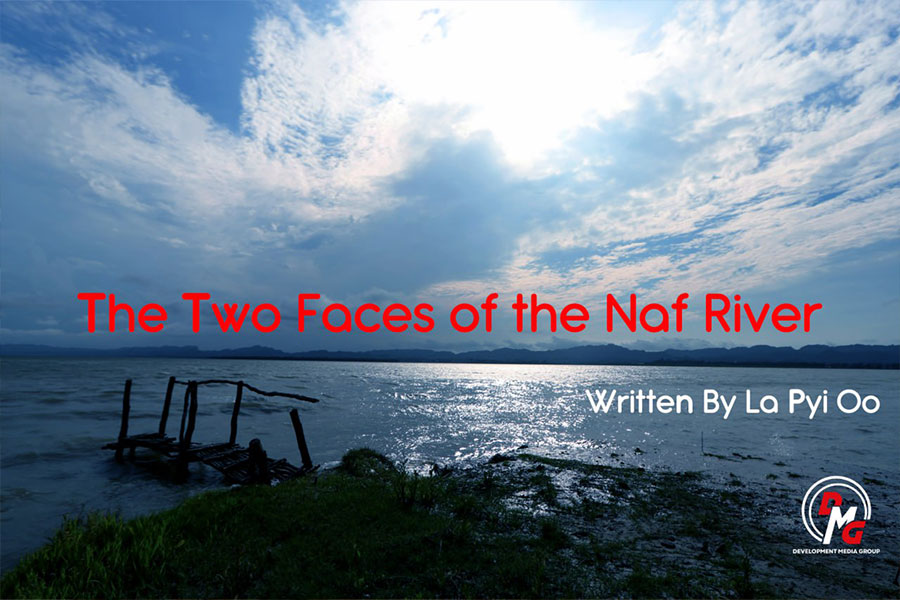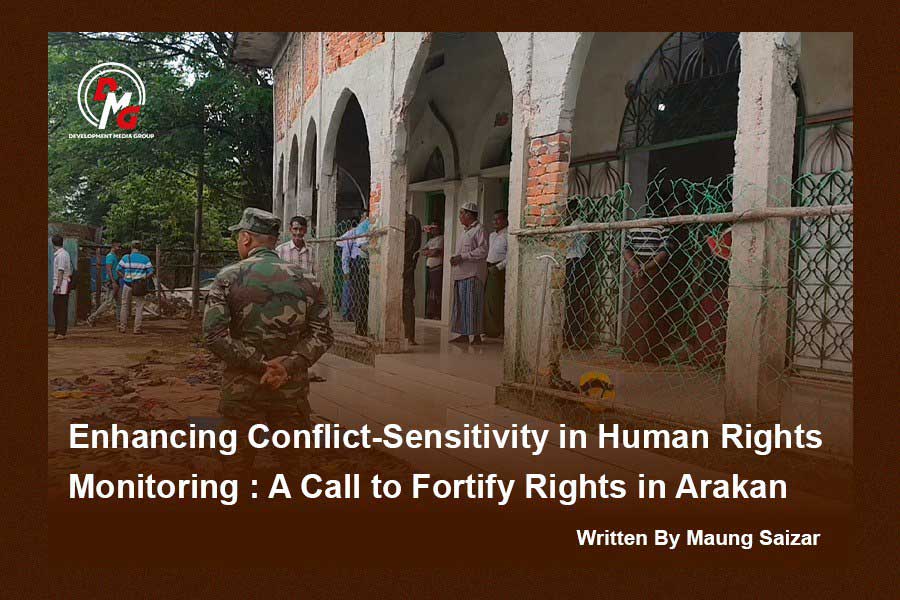- Junta unable to hold elections in dozens of wards and village-tracts in Sittwe, Kyaukphyu
- Fighting escalates between Myanmar military, Arakan Army in Ayeyarwady Region
- Regime steps up civilian arrests in Sittwe
- ULA safeguards Mrauk-U's ancient heritage
- Arakan on the Edge: What the DMG Landmine Impact Report Reveals About Myanmar's Deepening Humanitarian Crisis
Taking a closer look at the bigger Thingyan picture
In Arakan State, this year’s Thingyan was more than an annual celebration. Both Myanmar’s military regime and the United League of Arakan/Arakan Army (ULA/AA) organised their own Thingyan parties. The festival was politicised as both sides used this opportunity to gauge public support for them.
04 May 2023

Written By Thar Tun
In Arakan State, this year’s Thingyan was more than an annual celebration. Both Myanmar’s military regime and the United League of Arakan/Arakan Army (ULA/AA) organised their own Thingyan parties. The festival was politicised as both sides used this opportunity to gauge public support for them.
ULA/AA deputy chief Dr. Nyo Twan Awng, as he talked about liberated areas in a speech for an online event held by the Karenni Nationalities Defense Force on April 5, noted that the AA has brought certain areas under its control in Arakan State.
A liberated area is the basic foundation of revolution. Without it, it is difficult for a revolution to take root. Similarly, it is crucial to have a stronghold in politics. For a politician to get elected, he must be unrivalled in a particular place.
Zee Chaung Thingyan, near Maha Muni Pagoda by the Yangon-Sittwe road, attracted tens of thousands of revellers this year. It is fair to say the places where the ULA/AA organised Thingyan parties are under the ethnic armed group’s control. The fact that Thingyan parties organised by the ULA/AA were teeming with revellers not only reflected people’s trust in and support for the ULA/AA, but also their ties.
The ULA/AA started to build up its political influence in earnest in 2021. It has gained influence by establishing an administration, judiciary and taxation system — a move that shrunk the influence of the regime and consolidated the political influence of the Arakanese armed organisation.
It is fair to say the ULA/AA has now gained control of most rural areas. It has lately expanded its public service delivery in the education and healthcare sectors.
At the same time, it has deepened ties with its allies, which are members of the Federal Political Negotiation and Consultative Committee (FPNCC). The FPNCC is an alliance of some of the most powerful ethnic armies in Myanmar, and the AA is the second largest armed group in the FPNCC, after the United Wa State Army. The grouping, as well as Myanmar’s neighbour China, which has certain influence on FPNCC members, can’t be ignored in handling political issues in Myanmar.
So, the ULA/AA is playing an important part in Myanmar’s political changes. Its ties with FPNCC members and China will be among the factors that shape changes in Myanmar’s political landscape.
Arakan State is also a geopolitical battleground, with the United States and other Western countries vying for influence alongside China, Russia and others. In the past, the ULA/AA might not have been considered in their approaches to Arakan State, but they can’t afford to overlook the ULA/AA now.
On the military front, approximately 30 congratulatory messages were sent to mark the 14th anniversary of the founding of the ULA/AA, which reflects other armed groups’ stances toward the Arakanese army. Many of the organisations that sent congratulatory messages were armed by the ULA/AA and the rest are its allies. The fact that those groups frankly thanked the AA for its support shows that the ULA/AA is getting new allies. It can be seen that the ULA/AA has made new military allies beyond the FPNCC.
On the other hand, the military regime has problems with the ULA/AA. The military regime, which already has many enemies, cannot figure out how to control the ULA/AA. The military regime seems to be ignoring most of the ULA/AA’s demands because they don’t want to hear gunshots on Arakan soil. The military regime seems to be treating the ULA/AA in a more relaxed way, as it has given up on the ULA/AA’s Thingyan celebration plan, the removal of security checkpoints, and easing of the curfew order. The ULA/AA is showing military strength and political shrewdness.
Dating back to late 2018, the Myanmar military has fought against the ULA/AA fiercely at times. The Myanmar military had the full support of the National League for Democracy (NLD) government when fighting against the ULA/AA prior to the 2021 coup. The NLD, at the time and arguably still today, is the political party with the most support from the Burmese people. When the Myanmar military and the NLD could not defeat the ULA/AA even when it was convenient for their unholy alliance, how could the regime possibly fare better in its current position, assailed by armed resistance on several fronts?
The ULA/AA reached an informal ceasefire with the Myanmar military on November 26 of last year, citing humanitarian grounds. In the current Myanmar political movement, ethnic armed groups as well as other anti-regime forces have emerged, but there are very few armies that can simultaneously wield military and political forces. The ULA/AA is one such organisation.
The ULA/AA also has a very good chain of command system. Whenever anything is ordered by the leadership, the rank-and-file soldiers follow without hesitation, and the people follow along. The Arakan Army has gradually become a standard army. You can find evidence of this if you look at the latest ceasefire: When the leadership gave the order to end the fighting, the lower levels followed the chain of command.
Among the modern armed resistance leaders, AA chief Maj-Gen Twan Mrat Naing’s leadership style is smart, undergirded by strong military and political visions. While the sound of war drums was echoing throughout Myanmar, Twan Mrat Naing was organising a Thingyan festival in Arakan State. The regime also hosted Thingyan festivities, but the people of Arakan State joined the Thingyan events organised by the ULA/AA. This is proof-positive of the ULA/AA’s success, a seasonal and visual reminder of the changing balance of power in Arakan State.




















